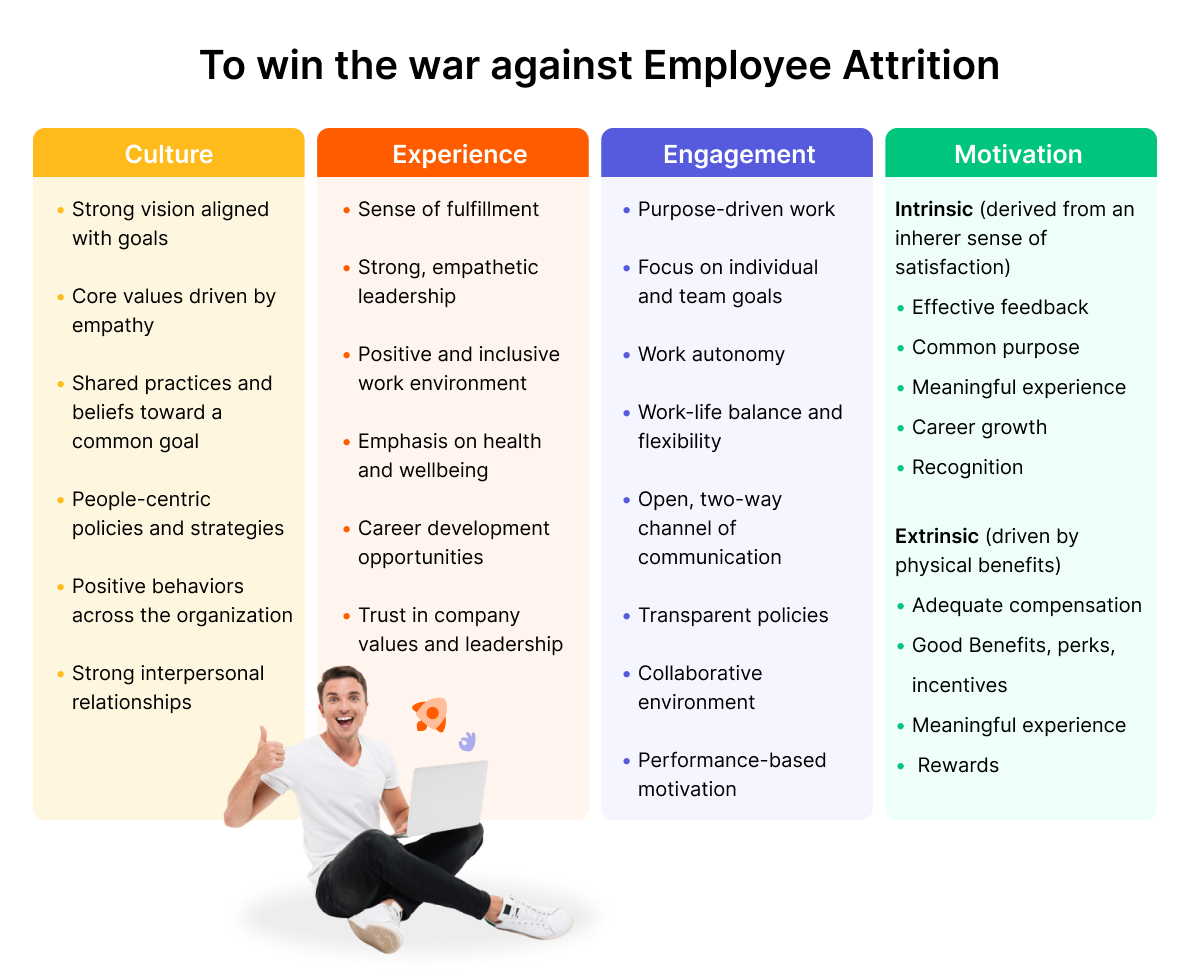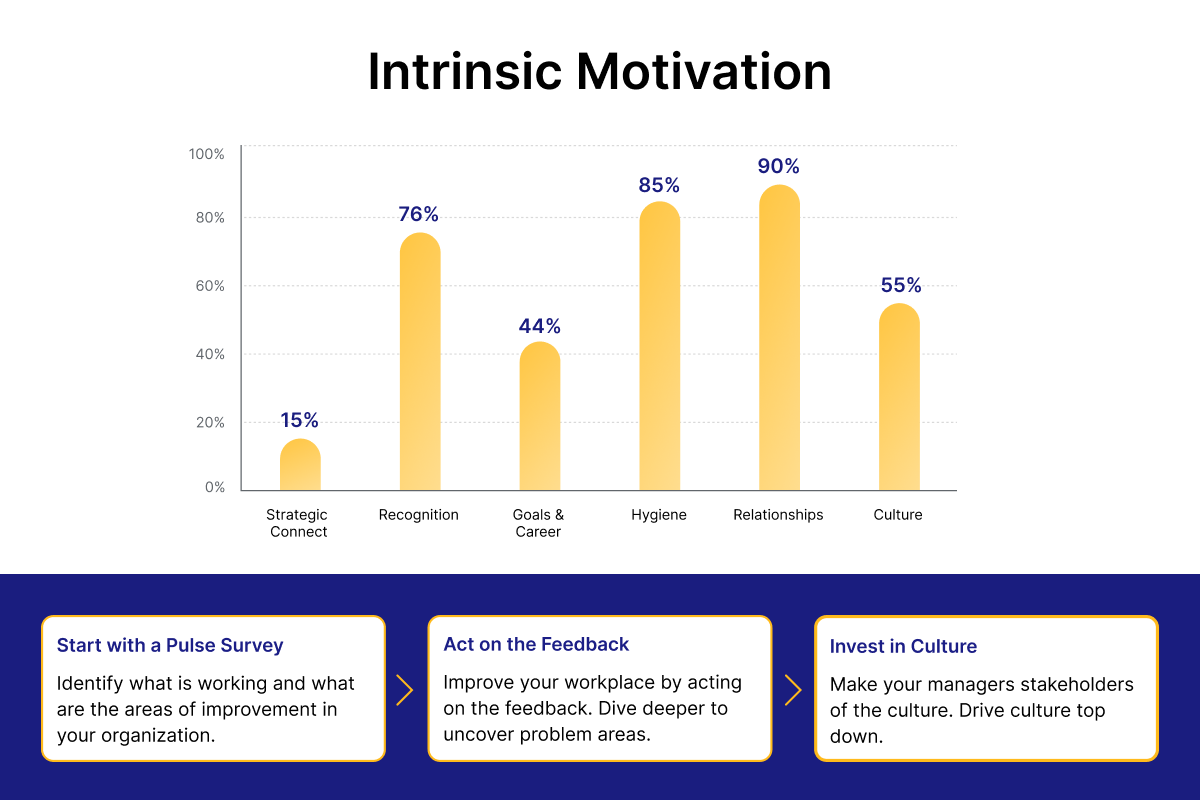Table of Contents
Since Covid changed the world economic dynamics, a startling 47.4 million employees have quit their jobs in an 'anti-work' movement that has left organizations struggling to plug the gaps. In this war of talent being played out on the global business stage, Gartner's Global Talent Monitor report and Mc Kinsey's Great Attrition report suggest that
Buoyed (up) by the post-covid freedom of remote work, on-demand teams, and greater opportunities in the market, the new tech-savvy workforce is abandoning the old live-to-work culture embodied by the spirit of sacrifice in favor of a forward-thinking approach to work.
New workforce outlook
Years of conditioning forced people to accede to dead-end jobs with poor compensation, low career growth, and inflexible working arrangements. All of it changed when the pandemic highlighted the value of human capital as a business investment.
Today, there is a marked paradigm shift in how employees live, work, and earn. A new breed of 'empowered' employees are at the forefront of the 'Great Resignation' movement, actively fuelling the rise of the 'gig' (temporary work) economy where:
Employers pushing the old hustle culture are either faced with active disengagement resulting in high attrition rates or passive disengagement in the form of quiet quitting (doing only the bare minimum at work) and moonlighting (working more than one job).
Job security has ceased to be the number one priority for the new generation of job seekers. They are confident in their abilities, secure in the knowledge that there are ample opportunities in the market, and determined to rewrite the rules of engagement in their favor.

Why is Employee Experience vital for Engagement?
The old capitalist work culture relied on boosting productivity without prioritizing employees' needs like psychological safety, work autonomy and flexibility, work-life balance, meaningful appreciation, and gratitude. The pandemic highlighted the rampant depression, burnout, and disengagement resulting from the old hustle culture, and employees everywhere took it up as a war cry to change their working conditions.

After a grueling period, which saw widespread worker shortage as employees voluntarily quit their jobs, employers finally conceded the importance of employee experience and an engagement strategy as keys to curbing attrition while motivating their employees.

Framing the new rules of employee engagement
The new-generation workforce is astute enough not to settle for less than they deserve. They want to work for empathetic leaders and jobs that are consequential, balanced, and offer the right employee experience. The winning equation should look like this:

To reduce employee attrition and retain the best talent, companies must motivate their employees using the right engagement strategies to deliver meaningful experiences built into the framework of a people-first work culture.

Early pioneers in the employee engagement space
Companies like Adobe, Workday, and NVIDIA became early pioneers in the employee engagement space. These organizations read the mood of the working masses and made necessary changes to build an inclusive workplace. In return, their employees rewarded them with high discretionary effort levels (the desire to go above and beyond) and low attrition rates.

The collective cultural shift and the importance of intrinsic motivation
From the examples above, it is evident that building the right engagement strategy goes hand-in-hand with tackling attrition. Since the pandemic, employee engagement has ceased to be an HR prerogative. From the highest leadership to line managers, there must be a collective effort to address the underlying issue.
To investigate the actual cause of attrition in the company and come up with a sustainable solution to reduce it, employers need to:
- The transition from short-term fixes like financial or pay perks to a long-term employee engagement strategy that's reviewed from time to time.
- Design an employee experience framework that factors in a continuous improvement process using employee inputs.
- Invest in a viable employee retention strategy to beat attrition and remain resilient in the face of evolving market trends.
The common denominator in all three is the human capital–the employee. If your workers are adequately motivated, they will stay on and commit to the organization's long-term growth.
The earlier hustle culture relied on extrinsic motivation – compensation, service awards, etc.- to reduce employee attrition. The Great Resignation and quiet quitting trends proved that intrinsic motivation - where the drive to work comes from an inherent sense of satisfaction or enjoyment - is the key to a high-engagement culture. And the primary driver for intrinsic motivation is effective and consistent feedback which significantly impacts self-esteem, competence, and overall engagement.
Studies have shown that employees who receive frequent, meaningful feedback are highly engaged and performant. Similarly, when employers take and implement inputs from their employees, there is a marked rise in engagement levels across the organization.
This is the premise for the JustLogin & Xoxoday Empuls partnership, which aims to attract and retain top talent while building a winning culture with a water-tight engagement strategy.

Just login and Xoxoday Empuls: Boosting Engagement through a great Employee Experience
The partnership between JustLogin and Xoxoday Empuls aims to solve the problem of talent attrition. The two companies conducted several studies to understand the primary drivers for intrinsic motivation and the significance of a multi-dimensional engagement approach.

JustLogins's proprietary HR software integrated with Empuls' engagement platform presents the ideal solution to win the war against employee attrition. Empuls and JustLogin together enable employers to:
- Create a culture of appreciation by celebrating employee milestones like birthdays and work anniversaries.
- Celebrate tenured employees with long service awards to highlight their valuable contributions.
- Involve every employee in engagement activities through an automated data sync between the two platforms.
- Digitalize people initiatives, and enable HR to engage hybrid teams using a multi-dimensional approach.
Simply put, employers can use the platform to connect, engage, and motivate their workforce and stay on top of dynamic changes in the world of work.




